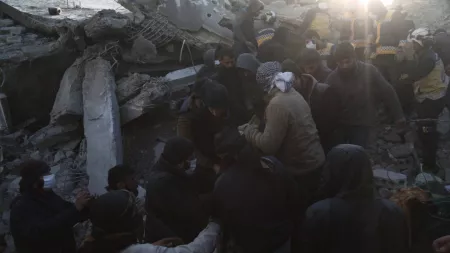Assistant Country Director at CARE Türkiye, Thomas Bamforth reflects on how the catastrophic effects of the February earthquakes can spark necessary change in humanitarian aid to regions long affected by compounding crises.
In the early hours of Monday 6 February 2023, more than 50,000 people were crushed to death across Türkiye and Syria following two devastating earthquakes and numerous aftershocks. The ancient cities of Hatay (Antakya), Kahramanmaras, Sanliurfa, and many others now lie under rubble.
The earthquake has displaced 2.7 million people and more than a million people are now without homes.
Thousands also died in Northwest Syria, where 4.4 million people have lived in dire conditions having fled the brutality of 12 years of war. Of these people, 1.7 million live in unplanned, self-settled displacement sites which are unsuited to human habitation and lack basic services such as water, electricity, or sewage. 80% of people on these sites are women and children. The World Health Organisation estimates that 1.2 million people are at risk of cholera.
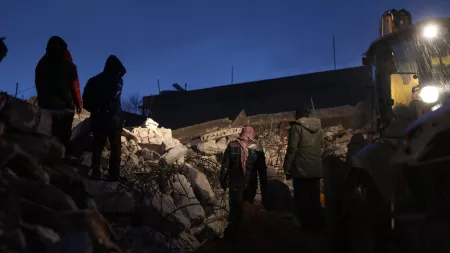
Many aid agencies capable of delivering humanitarian assistance were located in cities along the Türkiye-Syria border close to the epicenter. Their staff now have nowhere to live, and many humanitarian workers and their families have lost their lives. If this isn’t complicated enough, aid to Northwest Syria is dependent upon a UN Security Council resolution that enables cross-border assistance from a region in Türkiye that is now reeling from the impact of the earthquake. The resolution allows access to United Nations Agencies and partners to deliver lifesaving assistance to around 4 million people.
As the UN’s Emergency Relief Coordinator Martin Griffiths observed in a recent visit Northwest Syria is “possibly the worst place in the world right now”.
In Türkiye the scale of urban devastation is immense. More than 168,000 buildings have been heavily damaged or destroyed leaving more than a million people homeless. This places acute pressure on Turkish responders to alleviate the overwhelming needs in Türkiye while also making scarce resources available to a complex emergency on the other side of the border. In Northwest Syria, aid flows were already in decline and relief stocks dwindling because of reduced funding. Prior to the earthquake, concerns were that this was on its way to becoming another forgotten crisis.
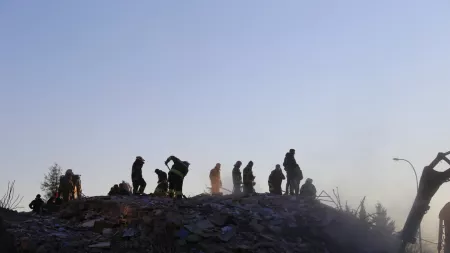
Beyond immediate needs
Now the risk is that a sudden – albeit much-needed – surge in earthquake response may result in losing sight of longer-term needs. In states at peace when natural disasters strike, communities can gradually recover to a pre-disaster normality, although the process may take years. For Syrians, however, “normality” has become a matter of war, displacement, unemployment, the absence of basic educational and health services, and dependency on aid for survival. With ongoing uncertainty around the renewal of the Security Council access resolution, aid has been short term and opportunities to invest more substantially in resilience programming were missed.
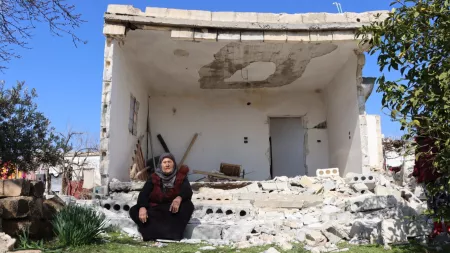
After over a decade of humanitarian response in Northwest Syria – according to estimates from the Shelter Cluster, a humanitarian coordination platform – roughly a billion US dollars may have been spent on shelter alone, with only disintegrating tents in flood-prone fields to show for it. Catastrophic living conditions and acute poverty have led to very high rates of gender-based violence and “negative coping strategies” such as child marriage. It is imperative that funding is spent both on addressing the immense short-term needs and seeking solutions to the underlying needs caused by years of instability.
As assistance begins to surge into Türkiye and Northwest Syria, there is an opportunity to fundamentally change an aid system that has been in place for so long and has resulted in so little.
What is needed is a complex response to multiple simultaneous crises of equal urgency: an earthquake, protracted crisis, harsh winter conditions, cholera, and the longer-term humanitarian implications of war and displacement. Now is the time to think beyond the existing structures of aid to longer-term investment in safer shelter, dignified living conditions, water, sanitation, and livelihoods. With more than a million children out of school in Northwest Syria, education is often cited by Syrians themselves as a humanitarian priority but is rarely deemed ‘life-saving’ by the response donors and aid agencies.
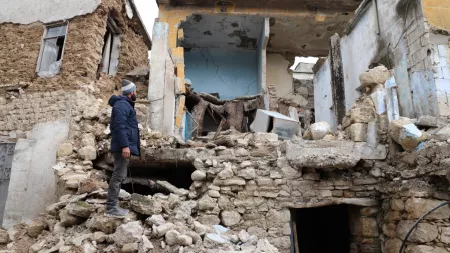
In Türkiye, for example, short-term tents in spontaneously established displacement sites quickly need to be upgraded to ensure access to basic water, sanitation and health services as well as shelter that will get people through a severe summer and harsh winter to come.
In Northwest Syria, longer-term approaches to humanitarian assistance are needed to sustain communities enduring protracted displacement. Instead of planning on a six-monthly basis around the current Security Council resolution allowing access to Northwest Syria, a two-year planning cycle is needed to build a platform for a more secure future in Northwest Syria.
Longer-term aid structures, funding mechanisms, and strategies are desperately needed.
A longer-term renewal of up to two years is essential in providing a protective legal framework for aid agencies operating across an international border, as well as to ensure the flow of the substantial funding and coordination support through UN Agencies and associated mechanisms such as the cross-border humanitarian pooled fund. In some critical sectors such as food security, as much as 80% of funding comes via the UN system.
A longer-term approach to recovery should empower and resource local actors in both countries who, once again, were the first to respond.
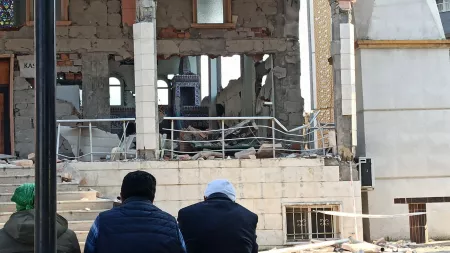
Nearly two months after the earthquake, the search and rescue teams have left and the full extent of the devastation has become apparent. An urgent scale-up of humanitarian aid is needed in both countries, beginning with a Security Council resolution that ideally allows for two years’ access for the implementation of humanitarian programs in Northwest Syria.
Equally important, however, is a major shift in thinking across the humanitarian, policy, UN and donor communities in both countries to adapt humanitarian assistance for longer-term needs.
*A version of this article was originally published on Devpolicy.
